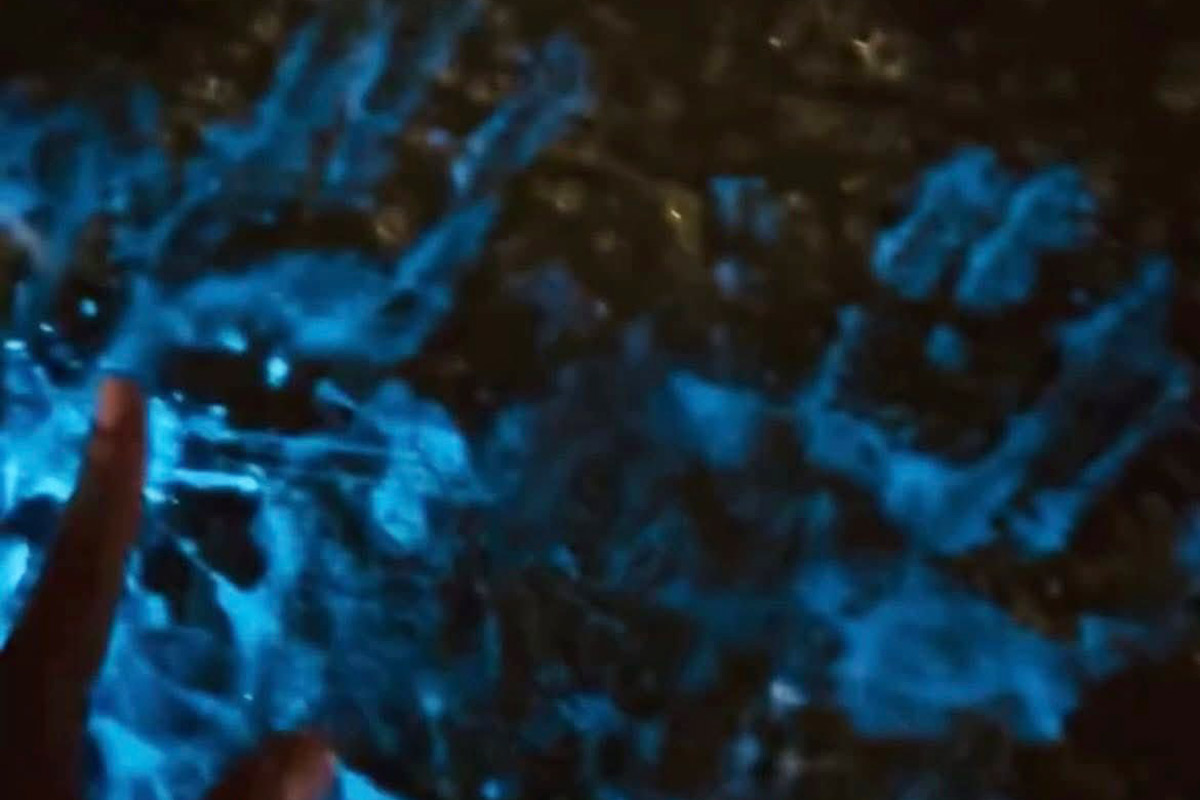On the night of May 17, while walking around Hon Gai beach, Hong Ha ward, Ha Long city with her family, Ms. Nguyen Thi Van Anh (40 years old, living in Hong Ha ward) discovered many people cheering in the area near the edge of the sea.

The whole family came close and saw the water near the beach as pink red, many people were running and stepping in this water area to create a green light effect at the foot.
Ms. Van Anh shared: This is the first time I and my family witnessed this, the whole family is very curious, children run on the beach to create a green effect. When going home to show off to grandparents, the elderly in the neighborhood, the people told the red tide, and the people said the phenomenon of phosphorus. Until now, I still don't know what my family stepped on the blue glow?
Talking to Lao Dong Newspaper reporters on the morning of May 19, Dr. Dang Do Hung Viet (Nha Trang city, Khanh Hoa province) said: The phenomenon of blue sea water when there is an impact (steps, waves, rowing...) is recorded as the high-density appearance of a reef species named Noctiluca scintillans, commonly called the photoalgae.
This is a single-celled animal belonging to the dinoflagellate group, measuring 0.22 mm, which can be observed with the naked eye when concentrated in large quantities.
Noctiluca glides thanks to the photosensitization mechanism, when mechanicalally stimulated, they activate the enzyme luciferase to break down the substrate luciferin, thereby emitting blue light.
In the dark sea environment, millions of Noctiluca cells simultaneously release new products, creating a very impressive "shellow sea" effect. This phenomenon has been recorded in many coastal areas around the world such as the Maldives, Puerto Rico, Japan and even Vietnam especially in the summer, when the ocean is nutrient-dense and the temperature rises.
The phenomenon of blue sea water shining at Hon Gai beach is a natural phenomenon of photoalgae, mostly enchanting and non-toxic. However, it is necessary to monitor if the phenomenon occurs frequently with high density, because it can reflect coastal ecological imbalance due to malnutrition or local pollution.

